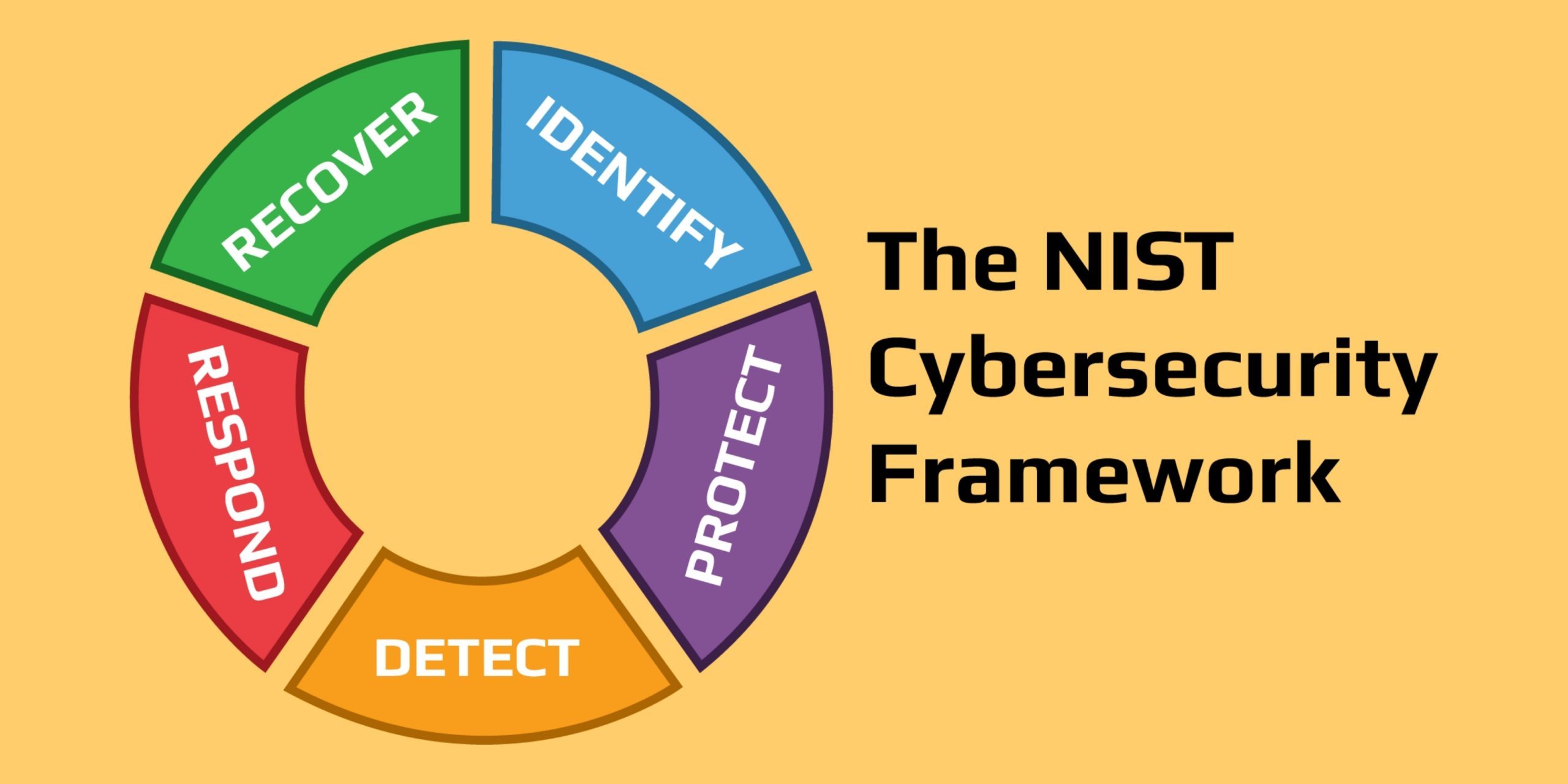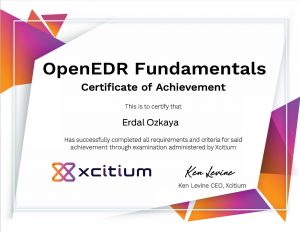
A Recipe for Cybersecurity Success
A Recipe for Cybersecurity Success
The NIST Cybersecurity Framework (CSF) is a set of standards and guidelines for managing and protecting critical infrastructure. It provides a common language and approaches for organizations to manage and reduce cybersecurity risk. The framework is designed to be flexible and adaptable, so organizations can tailor their approach to meet their specific needs and constraints. The key components of the NIST CSF include the following:
- Identifying, Protecting, Detecting, Responding, and Recovering from cyber-attacks.
- Providing a structured approach to managing and reducing cybersecurity risk by aligning with business drivers and processes.
- Providing a common language for discussing cybersecurity risk and informing decision-making.
- Supporting collaboration among organizations, sectors, and government to share information and coordinate responses to cyber threats.
The NIST CSF provides a risk-based approach to cybersecurity, and organizations can use it to identify and prioritize areas for improvement. It can also be used to assess the effectiveness of existing cybersecurity practices and to support continuous improvement. The NIST CSF is widely adopted by public and private organizations and is considered a best practice for managing and reducing cybersecurity risk.

5 Core Functions of the NIST Cybersecurity Framework
The NIST Cybersecurity Framework (CSF) is built around five core functions. These core functions provide a structure for organizations to effectively manage and reduce their cybersecurity risk by addressing each key element of the risk management process. The NIST CSF is designed to be flexible and adaptable. Organizations can use the core functions to align with their unique needs and risk profile and continuously improve their cybersecurity posture.
Identify:
Establishing the context of the organization’s cybersecurity risk and developing an understanding of the assets, threats, vulnerabilities, and impacts.
- Establish the organizational context: Understand the organization’s goals, mission, and operating environment.
- Define the assets: Identify the systems, data, and other assets critical to the organization’s operations.
- Assess the threats: Evaluate the potential risks and threats to the organization’s assets, including natural disasters, cyber-attacks, and other disruptions.
- Assess the vulnerabilities: Evaluate the potential weaknesses in the organization’s systems and processes that attackers could exploit.
- Evaluate the impacts: Determine the potential impact on the organization if a threat materializes, including financial losses, reputational damage, and other consequences.
- Develop a risk management strategy: Based on the assessment results, develop a risk management strategy to address the most significant risks to the organization.

Protect:
Implementing and maintaining appropriate and effective safeguards to ensure the delivery of critical infrastructure services.
- Implement security controls: Establish and implement technical, physical, and administrative controls to protect the organization’s assets.
- Evaluate the effectiveness of the controls: Regularly assess the effectiveness of the security controls and make changes as necessary to ensure that they are providing adequate protection.
- Monitor for new threats: Continuously monitor for new and evolving threats, and adapt the security controls as necessary to ensure they remain effective.
- Conduct regular risk assessments: Conduct regular risk assessments to ensure that the security controls remain aligned with the organization’s risk profile and risk management strategy.

Detect:
Developing and implementing the appropriate activities to identify the occurrence of a cybersecurity event.
- Establish detection processes: Establish processes for detecting and reporting cybersecurity events, including using security tools and monitoring systems.
- Monitor the environment: Monitor the organization’s systems and networks for signs of a cybersecurity event.
- Implement incident response plans: Develop and implement incident response plans to ensure that the organization is prepared to respond quickly and effectively in the event of a cyber-attack.
- Evaluate the detection processes: Regularly evaluate the effectiveness of the detection processes and make changes as necessary to improve the speed and accuracy of incident detection.

Respond:
Developing and implementing the appropriate activities to take action regarding a detected cybersecurity event.
- Implement incident response procedures: Establish and implement procedures for responding to cybersecurity events, including activating incident response teams.
- Contain the incident: Take steps to contain the incident and prevent further damage, including isolating affected systems and shutting down malicious processes.
- Collect and preserve evidence: Collect and preserve evidence of the incident to support investigations and provide information for recovery efforts.
- Notify stakeholders: Notify stakeholders, including management, customers, and law enforcement, as appropriate, of the incident.
- Begin recovery efforts: Begin the process of restoring normal operations as soon as possible, and work to minimize the impact of the incident on the organization.
Recover:
Developing and implementing the appropriate activities to maintain plans for resilience and to restore any capabilities or services that were impaired due to a cybersecurity event.
- Develop recovery plans: Develop and implement recovery plans for the organization’s systems, processes, and data in the event of a cyber-attack.
- Test recovery plans: Test the recovery plans to ensure that they are effective and that the organization is prepared to respond quickly and effectively in the event of an actual incident.
- Restore normal operations: Restore normal operations as quickly as possible, and work to minimize the impact of the incident on the organization.
- Review and improve: Review the incident and recovery efforts, and make changes to the organization’s security posture and risk management strategy as necessary to improve future performance.
- Communicate with stakeholders: Communicate the results of the incident and recovery efforts to stakeholders, including management and customers.

Why should organizations use the NIST Cybersecurity Framework?
Organizations should use the NIST Cybersecurity Framework (CSF) because it provides a comprehensive approach to managing and reducing cybersecurity risk. The CSF provides a structure for organizations to understand and manage their risk by addressing each key element of the risk management process. The benefits of using the NIST CSF include the following:
Improved risk management:
The NIST CSF provides a systematic approach to identifying, protecting, detecting, responding to, and recovering from cybersecurity threats, which helps organizations manage and reduce their risk.
Improved alignment with business goals:
The CSF is designed to be flexible and adaptable, so organizations can use it to align with their unique needs and risk profile and ensure that their cybersecurity efforts are aligned with their business goals.
Improved compliance:
Many regulations, including the Federal Risk and Authorization Management Program (FedRAMP) and the Health Insurance Portability and Accountability Act (HIPAA), require organizations to implement a risk management program based on a framework like the NIST CSF.
Improved collaboration:
The NIST CSF promotes collaboration between organizations, stakeholders, and the government, which can help improve critical infrastructure security and reduce cyber-attacks risk.
Improved resilience:
The CSF helps organizations prepare for and recover from cyber-attacks, which can improve the organization’s overall resilience and minimize the impact of a security breach.
Overall, the NIST CSF provides a comprehensive approach to managing and reducing cybersecurity risk that can help organizations improve their risk management, alignment with business goals, compliance, collaboration, and resilience.
In conclusion, the NIST Cybersecurity Framework provides a comprehensive approach to managing and reducing cybersecurity risk, making it an essential tool for organizations looking to strengthen their cybersecurity posture. The framework’s five core functions provide a roadmap for identifying and mitigating cybersecurity risks, improving resilience, and aligning cybersecurity efforts with business goals.
By using the NIST Cybersecurity Framework, organizations can proactively address potential threats and reduce the risk of cyber-attacks, leading to a more secure and prosperous future in the digital age. So, whether you’re a large corporation or a small business, incorporating the NIST Cybersecurity Framework into your security strategy can be the recipe for cybersecurity success.
Unleash The Power of Open-Source Security with Our Free Open EDR Open Source Endpoint Detection and Response (EDR) !
Our Free OpenEDR is designed to give you peace of mind to protect your business from cyber threats. With its powerful threat detection and response capabilities, you can rest assured that your network is secure from even the most advanced attacks. With our FREE Open Source EDR, you can benefit from the advantages and features of open-source technology, such as cost-effectiveness, flexibility, and transparency. Our solution is community-driven and always up to date with the latest security features. Deploy Our Free OpenEDR To:
- Enable continuous and comprehensive endpoint monitoring.
- Correlate and visualize endpoint security data.
- Perform malware analysis, anomalous behavior tracking, and in-depth attack investigations.
- Enact remediations and harden security postures to reduce risk on endpoints.
- Stop attempted attacks, lateral movement, and breaches.


Open EDR Training
Click here to get your certification
Cybersecurity Frameworks
A cyber security framework provides national and industry security leaders a common language and a set of standards that can help them evaluate, improve, and monitor their security posture. Using a framework makes it easier to define the processes and steps organizations should take to assess, monitor, and mitigate cyber security risks. It can also help organizations evaluate the security posture of their vendors or partners, and coordinate security with third parties.
Generally speaking, cyber security frameworks are voluntary, but they can be extremely important for organizations that need to comply with regulations and industry standards that include cyber security requirements. These frameworks are an essential stepping stone on the way to achieving compliance.
Source: Tutorial Spot,
Nowadays, safeguarding precious data from cybercriminals has never been so essential in this modern world. An organization has vast data, and it is challenging to manage all that without a structured plan. Any organization’s IT professionals cannot do it on their own. Hence, they rely on something called Cyber Security Framework. We will discuss many of these Cyber Security Frameworks here, and you’ll walk away knowing all the core concepts of these frameworks.
Click here to read the rest
Keywords
story of cybersecurity – nist cybersecurity metrics –
How to measure cybersecurity success? cybersecurity and information technology





